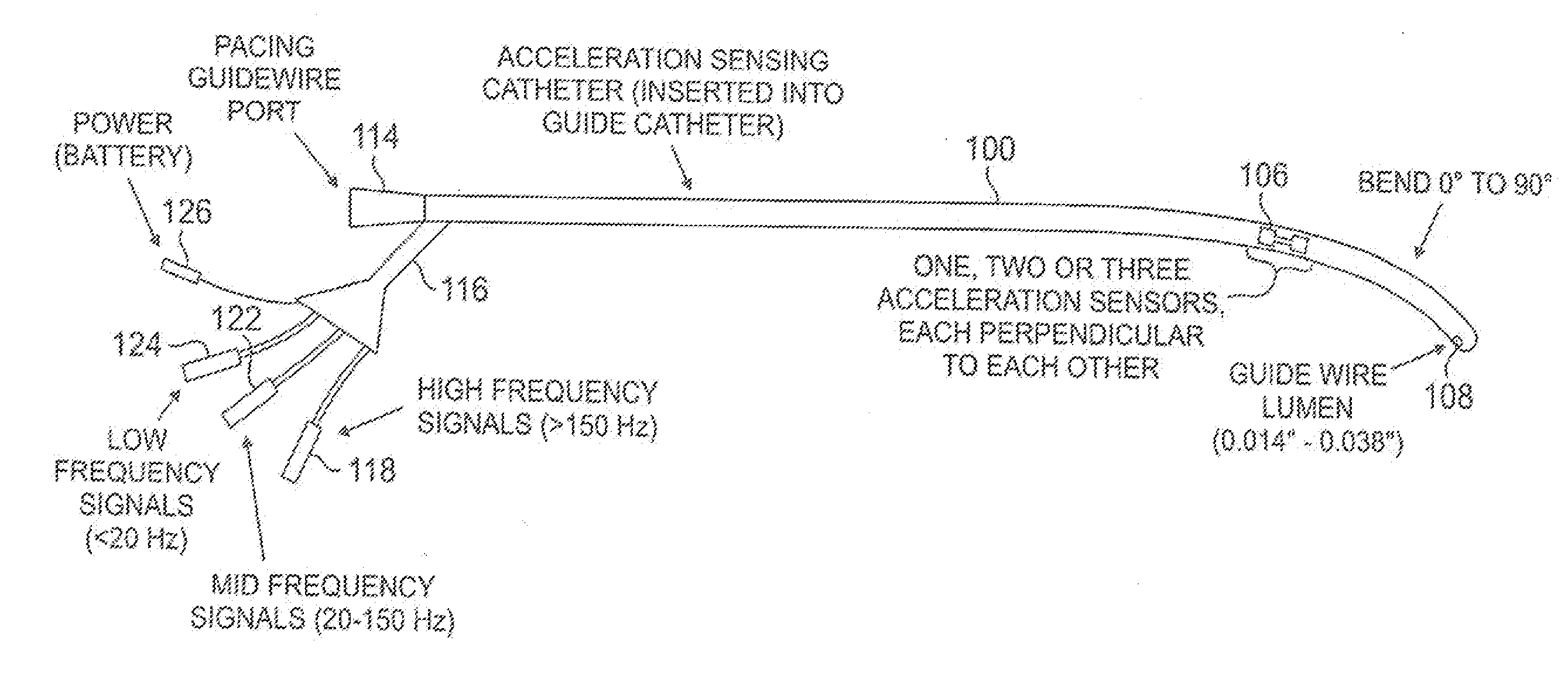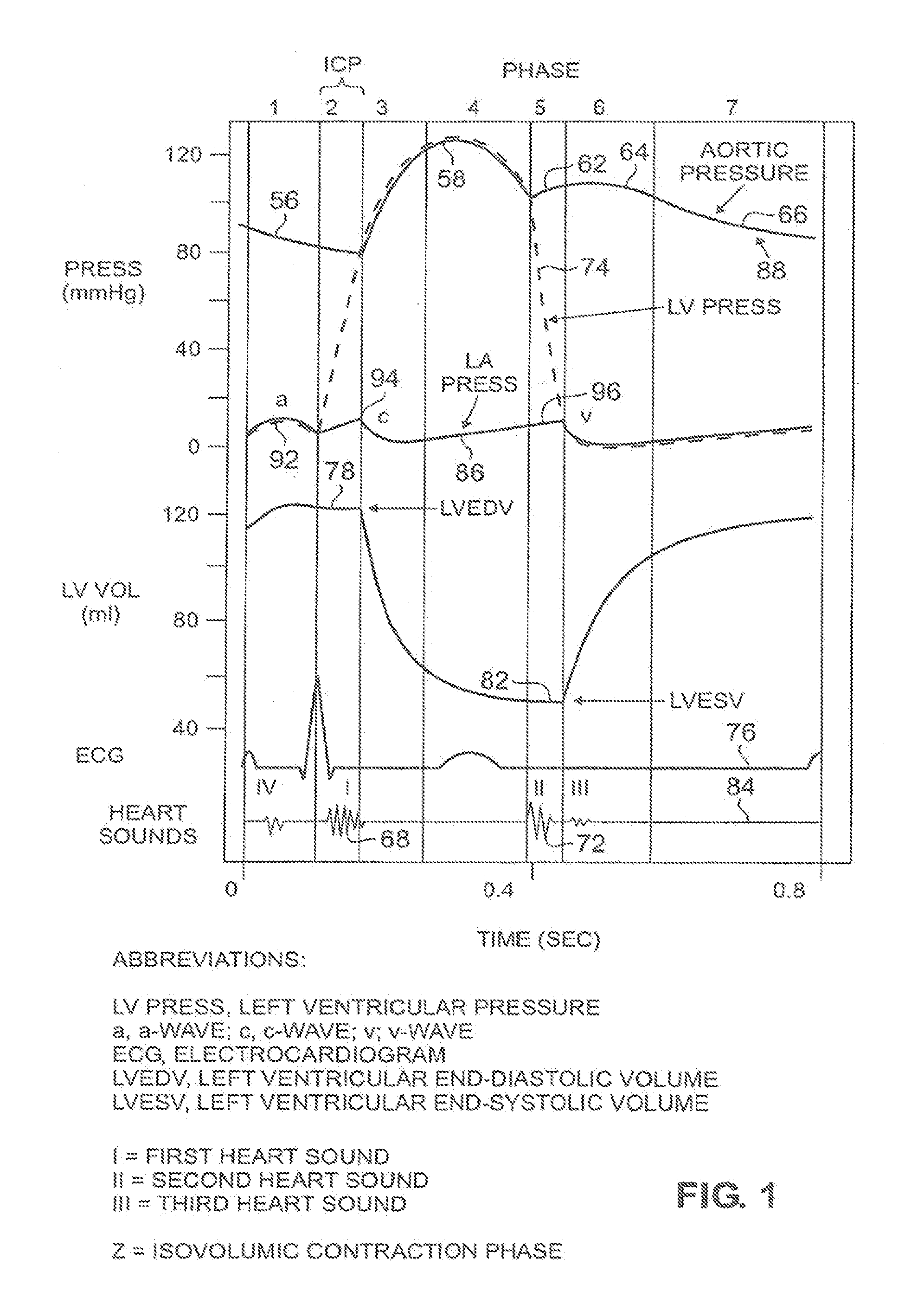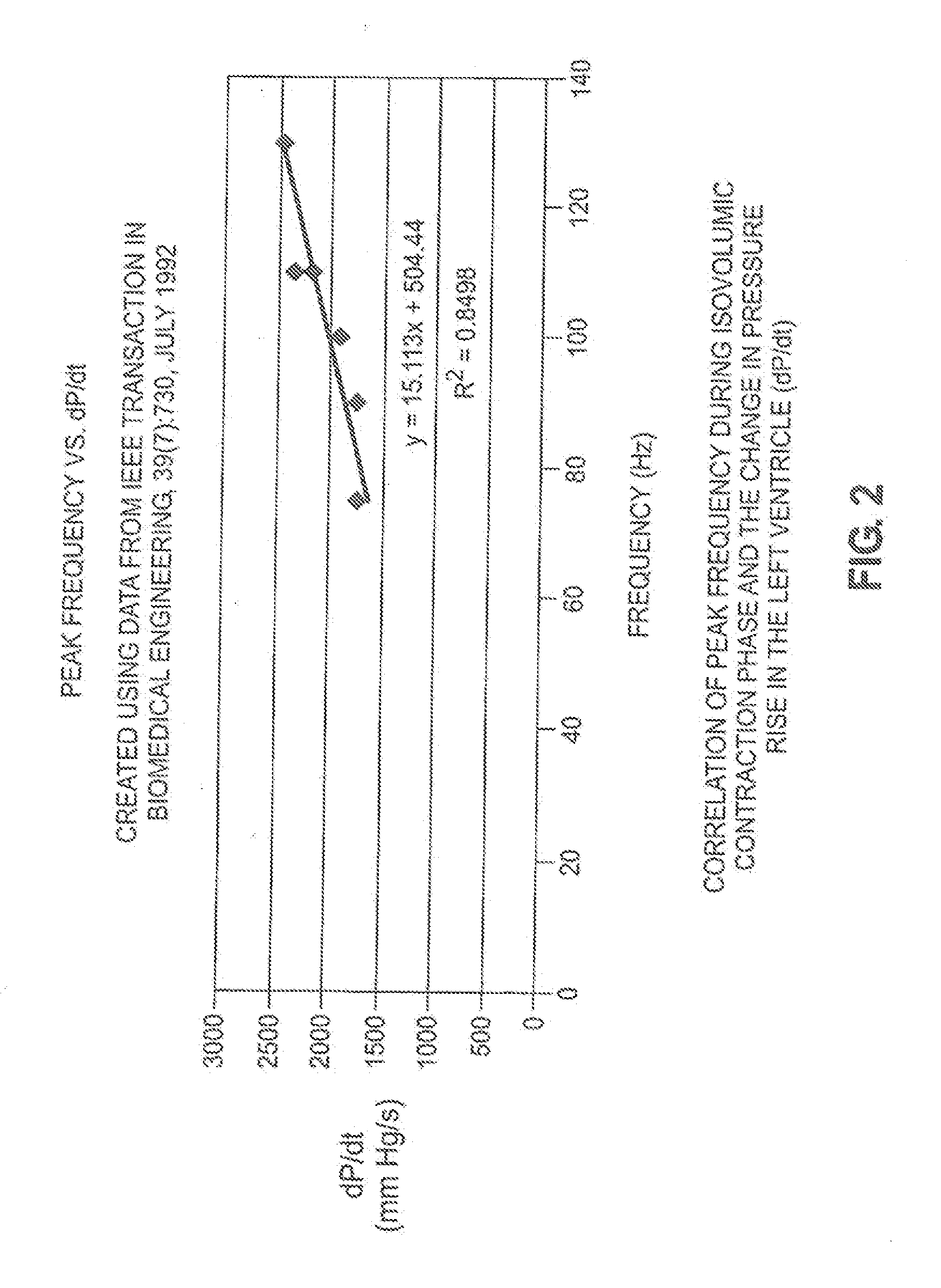Accelerometer-based monitoring of the frequency dynamics of the isovolumic contraction phase and pathologic cardiac vibrations
a technology of isovolumic contraction and accelerometer, which is applied in the field of accelerometer-based monitoring of the frequency dynamics of the isovolumic contraction phase and the pathologic cardiac vibration, can solve the problems of reducing the sensitivity of acceleration signal measurement and the interpretation of this measuremen
- Summary
- Abstract
- Description
- Claims
- Application Information
AI Technical Summary
Benefits of technology
Problems solved by technology
Method used
Image
Examples
Embodiment Construction
[0018]A graph of the cardiac filling and pumping cycle and valvular events is shown in FIG. 1. The cardiac LV pumping cycle (LV cycle) is divided into two periods: diastole and systole. Diastole is the filling period and systole is the ejection period. Five different phases of the LV cycle can be identified within the systolic and diastolic periods: isovolumic contraction 56, ejection 58, isovolumic relaxation 62, early diastolic filling (rapid filling) 64, and late diastolic filling (atrial contraction) 66. Mitral valve closure 68 (“MVC”) occurs during isovolumic contraction and aortic valve closure 72 (“AVC”) occurs during isovolumic relaxation. Also shown in the figures are the left ventricular pressure LV Press 74, a regular electrocardiogram ECG 76, the left ventricular end-diastolic volume LVEDV 78, the left ventricular end-systolic volume LVESV 82, a graph depicting heart sounds 84, the left atrial pressure LA Press 86, the aortic pressure 88, a-wave 92, c-wave 94, and v-wave...
PUM
 Login to View More
Login to View More Abstract
Description
Claims
Application Information
 Login to View More
Login to View More - R&D
- Intellectual Property
- Life Sciences
- Materials
- Tech Scout
- Unparalleled Data Quality
- Higher Quality Content
- 60% Fewer Hallucinations
Browse by: Latest US Patents, China's latest patents, Technical Efficacy Thesaurus, Application Domain, Technology Topic, Popular Technical Reports.
© 2025 PatSnap. All rights reserved.Legal|Privacy policy|Modern Slavery Act Transparency Statement|Sitemap|About US| Contact US: help@patsnap.com



